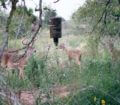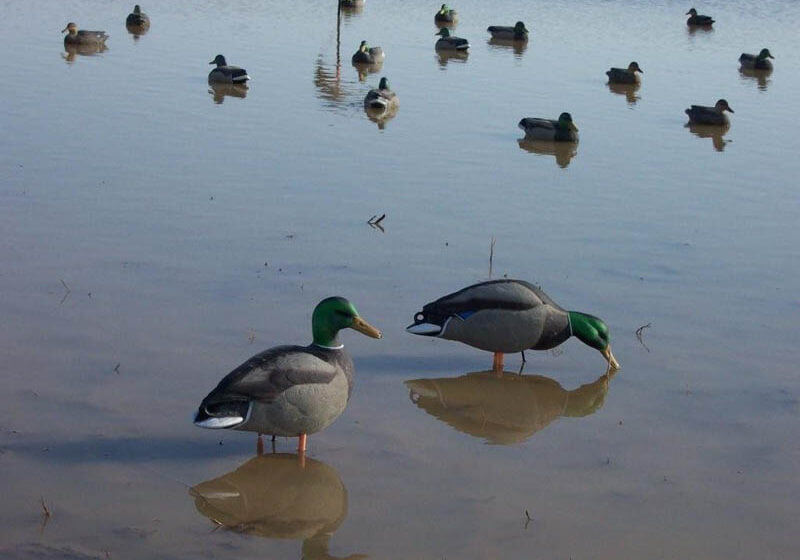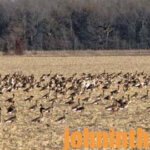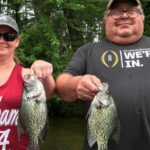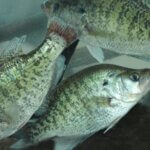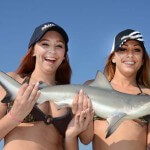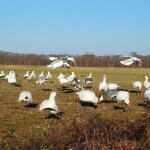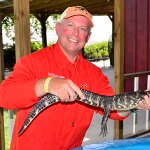Editor’s Note: One of the toughest places in America to hunt waterfowl is Louisiana, due to the temperatures. The first time I hunted there, my guide brought out two cans of industrial strength Yard Guard to keep the mosquitoes out of our blind. Bill Daniels of Hayes, Louisiana, has been hunting the Bayou State for 35+ years. This week he’ll tell us how to hunt ducks at the end of the flyway.
 Calling new ducks is not nearly as difficult as calling stale ducks. When ducks see the same blinds and the same decoy sets and hear the same calls every day, at the end of the day, they practically can write a list of the names of the hunters in every blind. Ducks wise-up quickly to duck hunters. Even though you may see a lot of ducks, getting ducks down to the blind can be tough. I tend to use a pintail whistle more than I do an aggressive mallard call, especially for pintails and wigeons. Because we’re hunting strictly in rice fields, we rarely if ever have wood ducks come in, since those ducks tend to skirt around us.
Calling new ducks is not nearly as difficult as calling stale ducks. When ducks see the same blinds and the same decoy sets and hear the same calls every day, at the end of the day, they practically can write a list of the names of the hunters in every blind. Ducks wise-up quickly to duck hunters. Even though you may see a lot of ducks, getting ducks down to the blind can be tough. I tend to use a pintail whistle more than I do an aggressive mallard call, especially for pintails and wigeons. Because we’re hunting strictly in rice fields, we rarely if ever have wood ducks come in, since those ducks tend to skirt around us.
We’ve got several blinds on 21,000 acres in southwest Louisiana. We may have blinds as close as only 500 – 600 yards apart and often closer than that. One of the big advantages we have on the place where I guide is that we’re the first rice fields that ducks come to when they leave coastal Louisiana. Our ducks come out of the marshes to feed on the rice. Another advantage we have is our southern border is the Lacassine Wildlife Refuge (http://www.stateparks.com/lacassine_national_wildlife_refuge_in_louisiana.html). Once the ducks leave the refuge and the marsh, our land is the first rice fields they see.
That is the good news. The bad news is that some years our regions don’t get a push of migrating ducks. With the El Nino winds on the West Coast, all our weather fronts in Louisiana tend to come from the west instead of from the north. Those El Nino winds from the west tend to block the northern cold fronts coming down from the north. Even if there aren’t any cold fronts, the nearby Lacassine Wildlife Refuge holds a good number of ducks and white-fronted geese called specklebellies. We can limit-out on specklebellies and ducks almost every morning.
 One of the advantages we have in Louisiana is that our state winters-over a large percentage of geese that come down the Mississippi Flyway. Past records tend to indicate that Louisiana once over-wintered about 85 percent of the white-fronted geese that came down the Mississippi Flyway. But today, records tend to indicate that we’re only over-wintering about 35 percent of the specklebellies that come down the Mississippi Flyway. Each year, we’re seeing fewer and fewer specklebellies than we’ve seen in the past.
One of the advantages we have in Louisiana is that our state winters-over a large percentage of geese that come down the Mississippi Flyway. Past records tend to indicate that Louisiana once over-wintered about 85 percent of the white-fronted geese that came down the Mississippi Flyway. But today, records tend to indicate that we’re only over-wintering about 35 percent of the specklebellies that come down the Mississippi Flyway. Each year, we’re seeing fewer and fewer specklebellies than we’ve seen in the past.
These diminished numbers of geese are also reflected in the number of specklebelly calls (http://www.ricelandcustomcalls.com) that I’m now selling. I’ve started selling a lot of Riceland speck goose calls up north and in the Midwest. I’ve sold my calls to states like Illinois, Kentucky and Tennessee. I think many specklebellies are over-wintering in southern Illinois. At one time, those states in the Midwest and in the upper southern states harvested a lot of Canada geese. But now, the hunters there seem to be harvesting more specklebellies than Canada geese. However, we’re still limiting out on specklebelly geese.
To learn more about all types of hunting, you can see John E. Phillips’ books, available in Kindle, print and Audible at https://johninthewild.com/books.
Tomorrow: Louisiana’s Specklebelly Geese Are Bill Daniel’s Favorites

